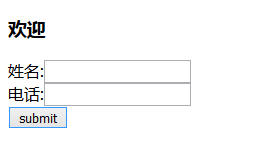|
前边的ReactJS基础,我们可以了解到,对于React,可以说是万物皆组件 React的组件应该具有 可组合(Composeable)可重用(Reusable)可维护(Maintainable)的特征,所以我们尽量将组件最小化,写的尽可能的小 前边已经介绍了组件的写法,下面我们来进一步了解一下组件的属性、状态、生命周期和嵌套 |
组件的属性
我们来编写一个组件SayHello,有一个name属性,然后输出hello + name的值,代码如下:
var SayHello = React.createClass({ render:function(){ return <h1 style={{color:"red"}}>hello {this.props.name}</h1> } }); ReactDOM.render( <SayHello name="lyx" />, document.getElementById('great') )
结果

有些细节需要注意:
1.创建的组件名称首字母必须大写。
2.<SayHello name="lyx" />与 document.getElementById('great')之间用的是逗号分隔
3.获取属性的值用的是 this.props.属性名
4.组件的style属性的设置方式也值得注意,要写成style={{“”100"}}这种形式
组件的状态
组件免不了要与用户互动,React 的一大创新,就是将组件看成是一个状态机,一开始有一个初始状态,然后用户互动,导致状态变化,从而触发重新渲染 UI 。我们来看代码
var Counter = React.createClass({ getInitialState: function () { return { clickCount: 0 }; }, handleClick: function () { this.setState(function(state) { return {clickCount: state.clickCount + 1}; }); }, render: function () { return (<h2 onClick={this.handleClick}>点我!点击次数为: {this.state.clickCount}</h2>); } });
上面代码实现的是点击h2,显示点击次数,效果如图所示

需要注意是的是
1.getInitialState函数必须有返回值,可以是NULL或者一个对象。
2.访问state的方法是this.state.属性名。
3.变量用 { }包裹,不需要再加双引号。
组件的嵌套
前边我们说了,组件要有复用的特点,线面来看一下如何复用
来看下边的代码
var Form= React.createClass({ render:function(){ return <div> {this.props.inputName}:<input type="text"/> </div> } }); var Iname= React.createClass({ render : function(){ return <div> <h3>欢迎</h3> <Form inputName="姓名"/> <Form inputName="电话"/> <button>submit</button> </div> } }); ReactDOM.render( <Iname />, document.getElementById('sub') )
这里我们创建了一个Form组件,然后又创建了一个Iname组件,然后我们在Inmae组件中调用Form组件两次,这里我们通过属性inputName传入值

组件生命周期
组件的生命周期可分成三个状态:
- Mounting:已插入真实 DOM
- Updating:正在被重新渲染
- Unmounting:已移出真实 DOM
生命周期的方法有:
componentWillMount 在渲染前调用,在客户端也在服务端。
componentDidMount : 在第一次渲染后调用,只在客户端。之后组件已经生成了对应的DOM结构,可以通过this.getDOMNode()来进行访问。 如果你想和其他JavaScript框架一起使用,可以在这个方法中调用setTimeout, setInterval或者发送AJAX请求等操作(防止异部操作阻塞UI)。
componentWillReceiveProps 在组件接收到一个新的prop时被调用。这个方法在初始化render时不会被调用。
shouldComponentUpdate 返回一个布尔值。在组件接收到新的props或者state时被调用。在初始化时或者使用forceUpdate时不被调用。
可以在你确认不需要更新组件时使用。
componentWillUpdate在组件接收到新的props或者state但还没有render时被调用。在初始化时不会被调用。
componentDidUpdate 在组件完成更新后立即调用。在初始化时不会被调用。
componentWillUnmount在组件从 DOM 中移除的时候立刻被调用。
这些就跟PHP中的一些魔术方法一样,满足条件自动调用,
下面以componentDidMount方法为例,
var Hello = React.createClass({ getInitialState: function () { return { color: "red" }; }, componentDidMount: function () { alert("111"); }, render: function () { return ( <div style={{color: this.state.color}}> Hello {this.props.name} </div> ); } });
此方法是第一次渲染后调用,就有如下结果
